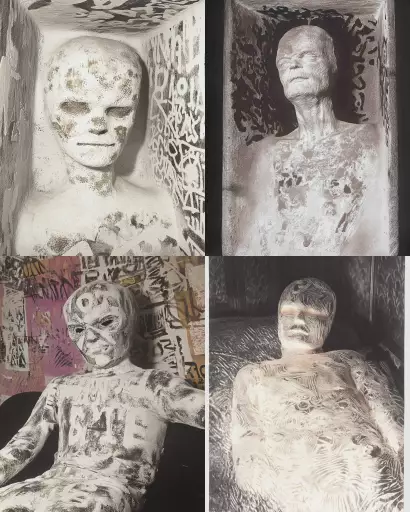Explore the Best AI Image Gallery

Beyond the Brushstrokes: How Wearable Tech is Evolving Creative Expression
The realm of creativity has always been defined by pushing boundaries and embracing innovation. Today, wearable technology stands as a powerful catalyst, reshaping how we create, interact with art, and perceive the world around us. From augmented reality glasses that overlay digital elements onto our physical surroundings to haptic feedback suits that translate sound into tactile sensations, wearables are blurring the lines between the physical and digital, opening up a universe of unprecedented creative possibilities.
A New Palette for Artistic Expression
Artists are harnessing the power of wearable tech to explore novel forms of expression. Imagine a painter who uses a haptic glove to feel the texture of their virtual canvas or a musician who controls sound through gestures captured by an augmented reality headset. These tools empower artists to transcend traditional mediums and delve into immersive, interactive experiences.
Design: A Fusion of Form and Function
In the world of design, wearables are revolutionizing prototyping and user experience. Designers can now use virtual reality headsets to walk through 3D models of their creations, refining details and visualizing the impact of different materials and textures. Haptic feedback suits allow designers to test the ergonomics and feel of products before they are even physically built.
Ethical Considerations: Navigating Uncharted Territories
As with any powerful technology, wearable tech raises important ethical considerations. Issues such as data privacy, user consent, and the potential for misuse need to be addressed thoughtfully. It is crucial to ensure that wearables are used responsibly and ethically, promoting inclusivity and protecting individual rights.
The Future of Creativity: A Wearable Symphony
Looking ahead, the convergence of wearable tech with artificial intelligence (AI) promises even more exciting possibilities. Imagine AI-powered wearables that learn from user preferences and adapt to their creative needs, providing personalized guidance and inspiration. This symbiotic relationship between human creativity and technological advancement has the potential to unlock a new era of artistic expression.
Key Trends Shaping the Wearable Creative Landscape
- Immersive Experiences: AR/VR headsets will continue to enhance creative workflows, allowing artists and designers to immerse themselves in virtual worlds and collaborate remotely.
- Haptic Feedback: The integration of haptic feedback into wearables will enable richer sensory experiences, allowing users to feel textures, vibrations, and even emotions within their creations.
- AI-Powered Assistance: AI algorithms will become increasingly sophisticated, providing personalized creative guidance, automating repetitive tasks, and generating new artistic concepts.
- Personalized Creativity: Wearables will cater to individual user needs and preferences, offering tailored tools and experiences that empower diverse forms of expression.
- Sustainable Innovation: The focus on sustainable materials and manufacturing processes will drive the development of eco-conscious wearable tech for creative applications.
Conclusion
Wearable technology is not merely a tool; its a paradigm shift, revolutionizing the way we create, interact with art, and perceive the world. As these technologies continue to evolve, they will empower artists, designers, and innovators to push boundaries, explore new frontiers of expression, and shape the future of creativity.








](https://images.ai-img.art/thumbnails/150/6f2d6b1a90ded3e7aa7f45df1bbcdc8dccbef4897f0b5fafa36105e63bfe9092.webp)
